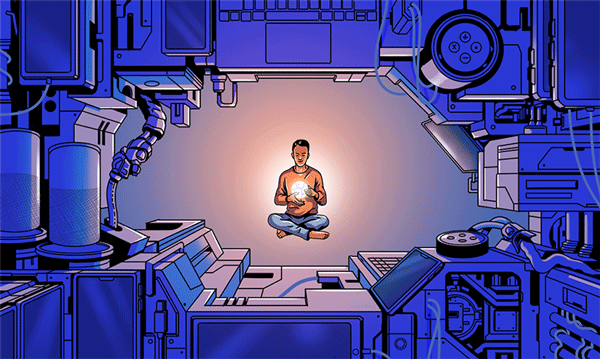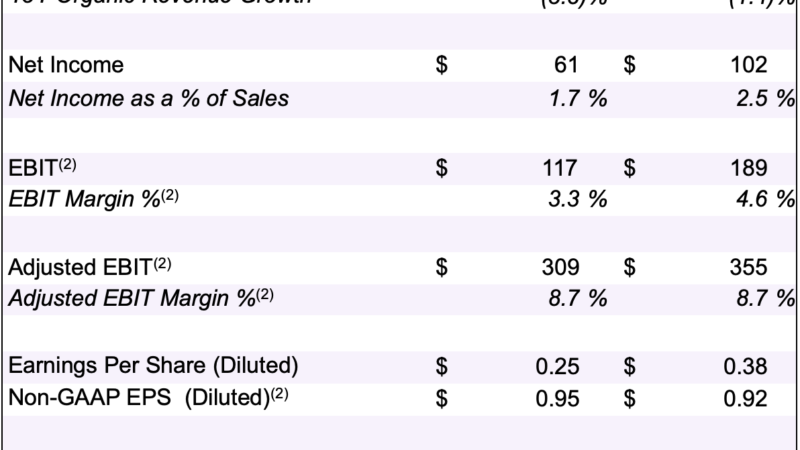It has been weeks since the coronavirus brought our lives to a halt, shutting down our schools, offices and gyms. Stuck at home, we have had nothing but time to reflect on the things that matter.
Consumer technology — most of it, anyway — is low on the list.
That’s right. I’m admitting that many of the high-tech innovations that I regularly cover in this column — from foldable smartphones to doorbell cameras — are excessive, even if they are kind of neat. For years, tech companies have pushed ultrafast 5G networks, artificially intelligent speakers that talk to us, and other whiz-bang gadgets and features, but most of us aren’t using those bells and whistles now.
In a crisis, our most important tech — what we have turned to again and again — has boiled down to just a few basic items and services:
-
Computing devices with access to work tools and a browser.
-
Communication tools to stay connected with our loved ones and colleagues.
-
Entertainment to keep us from losing our minds.
-
An internet connection to let us do all of the above.
When you think about it, that’s all the tech we truly need even when there is no pandemic. That’s actually a nice revelation.
This short list can guide our priorities in tech consumption even after we come out of this uncertain period. It also means that we don’t have to spend much money to maximize our happiness with tech.
A few weeks ago, a neighbor texted me with questions about internet speeds. We use the same internet provider, Monkeybrains, but his connection was much slower than mine.
So I asked him what router he owned. It turned out to be a seven-year-old model that used outdated wireless technology. I encouraged him to replace it, and after some hesitation he bought a new one. His internet connection became blazing fast.
This experience underscored what I had always suspected: Everyone wants a fast, stable internet connection, but many people hate investing in the infrastructure to get it. Networking gear is among the most important hardware to keep up to date; an outdated router could be a bottleneck to all your internet-connected devices.
The lesson: Put time and money into maintaining your internet infrastructure. Ask your internet provider about sluggish speeds, and if that doesn’t help, check your router and consider upgrading.
I generally recommend so-called mesh Wi-Fi systems, such as Google Wifi and Amazon’s Eero, which let you connect multiple wireless access points together to blanket your home with a strong internet connection.
Zoom, the easy-to-use videoconferencing service, surged in popularity in the pandemic for an obvious reason: We are all desperate to see and talk to one another while stuck at home.
But our sudden adoption of Zoom led to discoveries of the product’s weak security, which could have allowed attackers to hijack our web cameras, among other privacy snafus. It also revealed that many of us were unprepared and hadn’t picked a set of robust communication tools.
The lesson: Now is a good time to work with our families, friends and colleagues to decide what communication tools fulfill our needs while respecting our privacy. Try to choose messaging and video-chat apps from respected brands.
For me, they’re Signal and FaceTime for messaging and video chats with my friends and family, and Slack and Google Hangouts for collaboration with my colleagues. Some of these apps take extra security measures to encrypt our communications, while others have strong track records of protecting our data from hackers.
So many people are streaming video in the pandemic that in Europe, Netflix and YouTube were pushed to temporarily stream videos in lower-quality formats to prevent breaking the internet. Nintendo’s Switch games console is also practically impossible to find, because the game Animal Crossing: New Horizons, a Nintendo exclusive, has offered us a sweet escape from reality.
We all obviously care about entertainment: We are spending hundreds of dollars a year on digital subscriptions, including video and music streaming services.
The lesson: This is a good excuse to treat ourselves. Buy a device that is good at delivering your entertainment, like a $350 to $1,000 TV from TCL or Sony, or a $92 Bluetooth speaker from Ultimate Ears.
This item is last on the list because it’s the most obvious. The pandemic has highlighted the importance of the devices we use for work: our smartphones and computers.
The lesson: Because these are the tools that make us productive, we should invest in high-quality devices. The good news is that there is such a vast selection of smartphones and computers that you can buy great devices without spending extraordinary amounts of money. Roughly $400 will buy you a good Android device or iPhone, and a decent computer costs as little as $500.
I’m a fan of Google’s $400 Pixel 3A smartphone and Apple’s $330 entry-level iPad, which can be turned into a great budget laptop by attaching a keyboard.
This list of basic tech needs also serves as a guide to the innovations we don’t really need.
That smart speaker from Amazon or Google? It sure does a good job turning off the bedroom lights. That phone with the foldable screen? It sure looks cool. But if they don’t help you do work, stay connected and feel entertained, you might find other ways to spend your money.
Whatever setup you choose, keep it minimal. The more tech you own, the more devices you will have to troubleshoot.
And keep in mind that the tech you choose can be simple. This pandemic has brought a resurgence of the humble phone call, which is as good a communication tool as ever.








